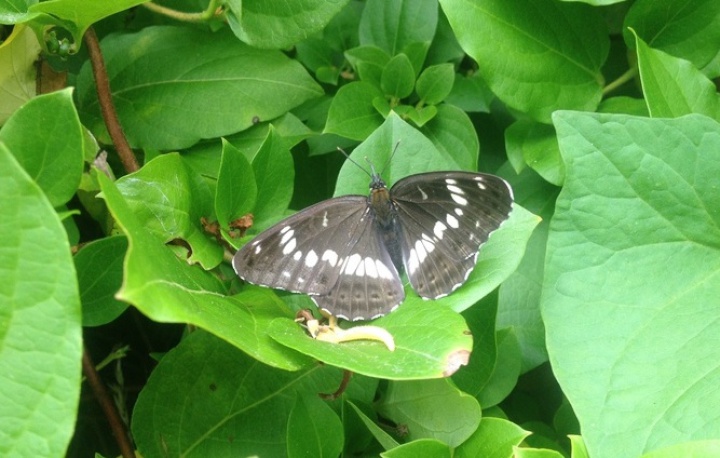Honshu White Admiral versus Japanese Honeysuckle
Honshu White Admiral versus Japanese Honeysuckle

Greater Wellington’s biosecurity guardians get on top of most pest plants, but there are times when we have to enlist nature to help us tip the scales in our favour.
And so it is with the fight against the Japanese Honeysuckle, a highly invasive vine that climbs over and smothers most plants, causing canopy collapse and allowing the invasion of more species of weeds. It thrives in a variety of habitats such as shrub lands, forest margins, coastal areas, river systems and wetland margins and is widespread around our region.
Enter the Honshu White Admiral butterfly, a biocontrol agent Greater Wellington Regional Council hopes will stop its spread and bring the light back into woodland canopies.
The butterflies will be used in the front line of efforts to control Japanese Honeysuckle, providing a cost-effective, easy to manage approach to what is becoming in some areas a major challenge to the health of our bush.
“We released around 100 butterflies in April 2017 to control an infestation in the Akatarawa ranges,” says Greater WellingtonBiosecurity Officer (Pest Plants) s Kieran McLean. “The butterfly’s offspring, during their caterpillar stage, will eat their way through the plant’s foliage. If the numbers are large enough they can defoliate the honeysuckle without damaging the host plant. Hopefully the caterpillars are out there now eating their way through honeysuckle leaves.”
The black, white and brown butterfly us quite small: its wingspan is only 6cm. It lives for only one month but during that time lays around 200 eggs. As the caterpillars hibernate in cold weather, the Honshu white admiral is usually seen in warmer months.
Development from an egg to an adult butterfly can occur in as little as eight weeks at warm temperatures. Egg to caterpillar takes about one week. After about six weeks the caterpillar is fully grown and it then sheds its skin to form a light green and brown pupal case suspended from the plant. One week later it emerges as a butterfly.
Extensive research is undertaken before a biocontrol agent, such as the Honshu White Admiral Moth, is introduced. In New Zealand where biocontrol agents have been introduced follow up surveys have been undertaken to check for non-target damage.
So far Landcare Research has reported that 20 invertebrate agents and five fungal agents (including three self-introduced species) have been surveyed and results have provided additional assurance that current best practice host-testing is a good indicator of what will happen in the field. Non-target attack was generally absent, even when some might have been expected
It will take several years until we know if the population of butterflies has been successfully established and if they are effective at damaging the Japanese honeysuckle. Follow up research on their impact will take place this summer, though it will take several seasons to properly assess their performance.
Using biocontrol agents is just one of the ways Greater Wellington’s biosecurity officials work to keep the region free of pest plants and pest animals.
ends


 Gordon Campbell: On bird flu, AUKUS entry fees and Cindy Lee
Gordon Campbell: On bird flu, AUKUS entry fees and Cindy Lee Labour Party: Penny Drops – But What About Seymour And Peters?
Labour Party: Penny Drops – But What About Seymour And Peters? Government: PM Announces Changes To Portfolios
Government: PM Announces Changes To Portfolios Family First: Just 1 In 6 Oppose ‘Three Strikes’ - Poll
Family First: Just 1 In 6 Oppose ‘Three Strikes’ - Poll Labour Party: Budget Blunder Shows Nicola Willis Could Cut Recovery Funding
Labour Party: Budget Blunder Shows Nicola Willis Could Cut Recovery Funding  Government: Urgent Changes To System Through First RMA Amendment Bill
Government: Urgent Changes To System Through First RMA Amendment Bill Peace Movement Aotearoa: Global Military Spending Increase Threatens Humanity And The Planet
Peace Movement Aotearoa: Global Military Spending Increase Threatens Humanity And The Planet


